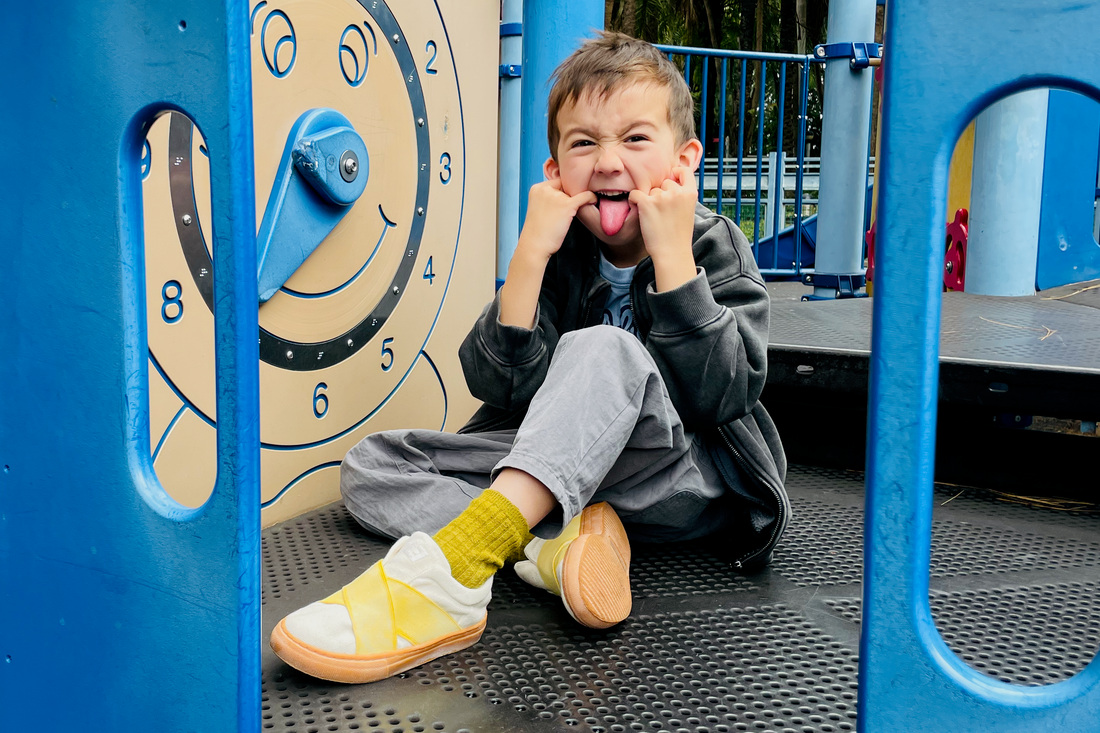
👟 Should You Buy Second-Hand Shoes for Kids? What Parents Need to Know
Kids outgrow shoes quickly. It’s tempting to save money (and reduce waste) by turning to hand-me-down shoes or buying second-hand toddler shoes. But are used kids’ shoes actually safe? Here’s the full breakdown — the pros, cons, and a better idea that's worth trying.
✅ Why Parents Consider Second-Hand or Hand-Me-Down Shoes
-
Budget-Friendly
Kids need new sizes every 3–6 months. Buying cheap kids shoes or picking up used toddler shoes may seems like an easy way to save. -
Eco-Friendly Parenting
Passing down or buying second-hand baby shoes feels like the sustainable choice. -
Less Wear for Infants
Pre-walkers hardly touch the ground. Hand-me-down booties or crib shoes are often fine.
However, it's more complicated.
⚠️ Risks of Buying Used Kids’ Shoes
1. Molded Fit Affects Foot Development
Shoes mold to the first child’s walking style. Wearing hand-me-down shoes can cause misalignment, discomfort, or gait problems.
2. Worn-Out Support
Even if used kids shoes look okay, the soles and cushioning may already be compressed. This reduces shock absorption which is important for preschoolers’ growing feet.
3. Hygiene Concerns
Old shoes can carry bacteria, fungus, and odors. This is especially risky for toddlers who wear them all day.
4. Expert Advice
Most podiatrists say to buy new toddler shoes once kids start walking. Proper fit, flexible soles, and supportive design matter most.
👶 When Second-Hand Kids Shoes Might Be Okay
- For pre-walkers or babies in crib shoes (fit isn’t critical).
- If shoes are almost new (no uneven wear, flat insole, firm closures).
- If you sanitize properly before use.
🌱 Why Little Fierce Is a Smarter Alternative
When it comes to our kids, nothing is more valuable than their health. Shoes directly affect how children walk, run, and play. So this is one area where it’s worth making the investment. That’s why Little Fierce sustainable kids sneakers were designed differently:
- Protects Growing Feet. Flexible soles and roomy toe boxes, our design supports healthy foot development from new walkers to preschoolers.
- Gentle on Skin. Because our materials are all-natural and non-toxic (organic cotton, biodegradable polyamide, natural rubber, and plant-based dyes), they’re breathable, chemical-free, and kind to sensitive skin.
- Eco-Friendly & Bio-Neutral. Every pair is made to biodegrade safely, helping parents reduce waste without compromising quality.
- Independence for Young Kids. Easy slip-on design with elastic closures means kids can put them on themselves. No daily struggles at the door.
- Style Parents Approve. Urban-inspired design that looks good with city outfits, while still playful for kids.
- Ethically Made. Produced in a family-run Portuguese factory with European-sourced materials and complete transparency.
👉 In short: you skip the health and hygiene risks of used kids shoes and still support the planet.

📝 Parent Checklist Before Buying Kids’ Shoes
- 👣 Proper fit with growing room
- 👟 Flexible sole with grip (good for preschool sneakers)
- 🧼 Breathable, non-toxic materials
- 🌱 Sustainable design (eco-friendly kids' shoes)
- ✅ Easy on/off for kids’ independence
❓ FAQs
Are hand-me-down shoes safe for kids?
Not always. Used toddler shoes can cause foot alignment problems. Experts recommend new shoes once children start walking.
Can babies wear second-hand shoes?
Yes, buying second-hand baby shoes for pre-walkers is fine, since they don’t need structured support yet.
How do I check if used shoes are okay?
Look for flat insoles, even soles, firm straps, and clean interiors. If molded or worn, skip them.
What are the best shoes for preschoolers?
Shoes with flexible soles, durable outsoles, and roomy toe boxes — like Little Fierce sustainable sneakers.
What’s better for the planet: used shoes or sustainable kids sneakers?
Used is good if the condition is excellent. But in most cases, eco-friendly kids shoes that biodegrade (like Little Fierce) are healthier for feet and better for waste reduction.
